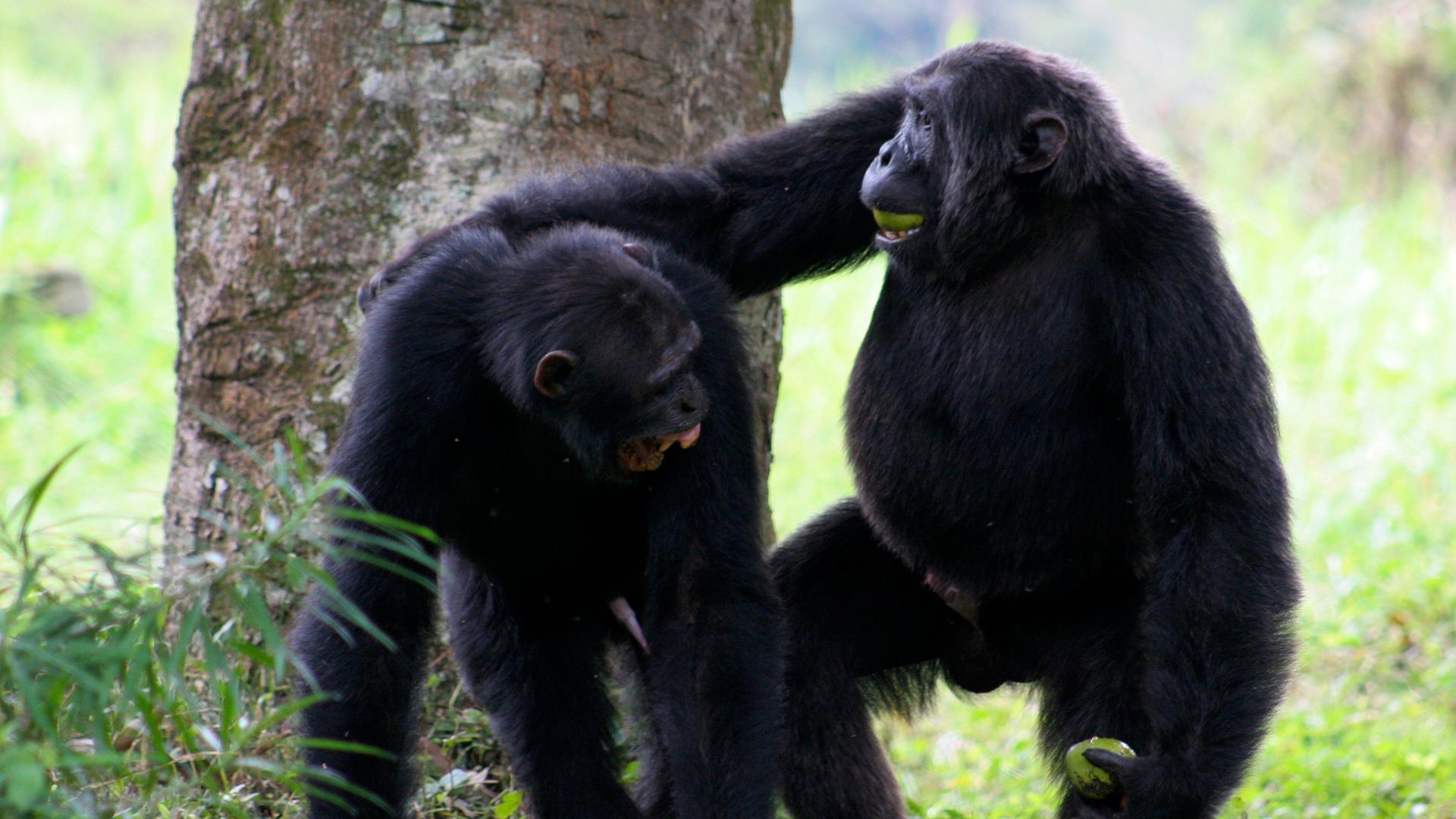A ‘lexicon’ of chimp gestures may tell us things about our own language
Two high ranking male chimps bond.
For more than eight years, Dr. Catherine Hobaiter has spent time with the Sonso chimpanzee community in the Budongo Forest Reserve in Uganda. It's there that she's seen the group of 18 chimps use a wide array of gestures to communicate with each other.
That may not seem like big news. We've seen apes communicate using sign language before — Koko, the famous gorilla who lives at the San Francisco zoo, can "speak" using over 1,000 words of American Sign Language.
But those are languages taught to apes by humans. What the chimps in Uganda are doing, says Hobaiter, is different. Instead, they've created a system of gestures entirely on their own, and some of them may not be that far off from what humans do.
One gesture is "presenting the back sole of your foot to somebody just ask them to climb on your back or offering an arm to be groomed," explains Hobaiter, a researcher at the University of St. Andrews in Scotland. For example, she's seen mother chimpanzees do the foot gesture to their babies when they turn whiny. It's that kind of specificity that makes these gestures special.
"Almost all animals use a physical movement, facial expressions and calls to communicate," she says. "But what makes chimpanzee and all ape gestures unique is that they are 'intentional or purposeful.' They actually have a goal in mind that they're gesturing to achieve."
That's dramatically different than, say, a dog's tail wag. Not only is that gesture simply a "broadcast" to the rest of the world, but it's the action of a domesticated pet. In contrats, Hobaiter says, "wild animals in general don't really do this kind of purposeful communication."
There are 18 members of the Sonso chimp community ranging from infants to grandfathers. So far, Hobaiter and her team have identified 66 gestures that they use. Their research has been published in the scientific journal Current Biology.
The World in Words podcast is on Facebook and iTunes.
For more than eight years, Dr. Catherine Hobaiter has spent time with the Sonso chimpanzee community in the Budongo Forest Reserve in Uganda. It's there that she's seen the group of 18 chimps use a wide array of gestures to communicate with each other.
That may not seem like big news. We've seen apes communicate using sign language before — Koko, the famous gorilla who lives at the San Francisco zoo, can "speak" using over 1,000 words of American Sign Language.
But those are languages taught to apes by humans. What the chimps in Uganda are doing, says Hobaiter, is different. Instead, they've created a system of gestures entirely on their own, and some of them may not be that far off from what humans do.
One gesture is "presenting the back sole of your foot to somebody just ask them to climb on your back or offering an arm to be groomed," explains Hobaiter, a researcher at the University of St. Andrews in Scotland. For example, she's seen mother chimpanzees do the foot gesture to their babies when they turn whiny. It's that kind of specificity that makes these gestures special.
"Almost all animals use a physical movement, facial expressions and calls to communicate," she says. "But what makes chimpanzee and all ape gestures unique is that they are 'intentional or purposeful.' They actually have a goal in mind that they're gesturing to achieve."
That's dramatically different than, say, a dog's tail wag. Not only is that gesture simply a "broadcast" to the rest of the world, but it's the action of a domesticated pet. In contrats, Hobaiter says, "wild animals in general don't really do this kind of purposeful communication."
There are 18 members of the Sonso chimp community ranging from infants to grandfathers. So far, Hobaiter and her team have identified 66 gestures that they use. Their research has been published in the scientific journal Current Biology.
